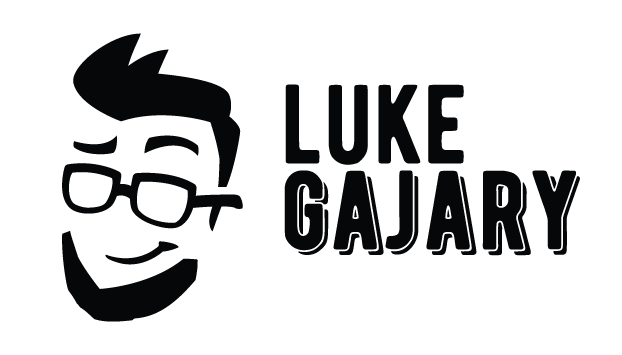Excerpt from Tell It Well
Chances are, you’ve never heard of Dan Berlin.
At one point, he was a normal guy from Fort Collins, Colorado. However, in his mid-30’s, a disease called one-rod retinal dystrophy slowly began to wreck havoc on his eyes. His vision began to slowly erode, eventually leaving him completely blind, out of shape, and depressed.
This was a life-altering event, but Dan didn’t let it keep him down. On July 4, 2009, he began to run, targeting a half marathon for the fall— not an easy feat when you’re blind and live at a high altitude.
When the event neared, Dan felt that his lack of sight might make him a hazard for other runners, so he requested that the race director pair him with another runner. Together, he and his guide finished the half marathon in two hours and ten minutes, which is a great time given the circumstances. 9
Dan was immediately hooked. He and his guide paired up again to run a full marathon—the 2011 New York City Marathon—but he did not stop there. He went on to run the 2012 Colorado Marathon and 2013 Toughman Half Ironman in New York. And with a little help from his friends, Dan made history at 9:20 on the morning of Wednesday, October 8, 2014.
This was the moment he and four teammates completed the Rim to Rim to Rim, a 46-mile bucket list run for ultra-runners. By this time, Dan was in his mid-40’s and was the first blind athlete to complete the grueling run from the South Rim of the Grand Canyon to the North Rim, and back again. This course, which features 29,000 feet of elevation gain, took the team 28 hours to complete.
“I feel great,” Dan said after the run.10 “There were some wonderful moments and there were definitely dark moments. You just don’t know what your body is going to do.”
I’m not sure how they did it. Did they sleep? Did they run straight through the night? This would be tough enough feat for those who are not blind!
As journalist Stephen Meyers artfully explained in the Coloradoan: “Dan Berlin’s message is clear: his blindness is an inconvenience, not a disability. His blindness doesn’t have to be limiting. His blindness won’t keep him from running.”
“It (blindness) doesn’t have to be limiting,” Dan said. It can be an expanding situation to really enjoy doing some great things. A lot of wonderful things have come about because of this this (my blindness).”
What a remarkable story! Like with most great stories, Dan will tell you he didn’t pull it off on his own. “Achieving this is an amazing accomplishment for all five of us. This run wouldn’t have quite the same meaning without a team to depend on each other.”
The Coloradoan mentioned that Dan was guided by Charles Scott (who had previously guided him through his marathons), Alison Berna, Brad Graff, and the final individual was left unnamed. The team used a combination of voice commands, a rigid tether, and trekking poles to help Dan navigate the difficult terrain of the Grand Canyon, a route that often led them past hundred-foot drop-offs on one side.
“He called me asking if I would guide him.” Charles said. “I had a lot of self-doubt. … He just told me, ‘Don’t worry about it. I’ll show you how.’ There is something powerful about helping another person. Running Rim to Rim to Rim you’re going through various levels of discomfort. When you’re taking turns running (for yourself) and then guiding, it takes you out of your self-pity mode that you fall into when you’re hurting.”
This was illustrated in the final mile up the 6,000-foot climb to the ridge of the North Rim. At this point, Dan had hit a rough patch, but Alison was at a high note. She was full of energy and enthusiasm, going as far as to do handstands near the summit while encouraging Dan, who was hurting both physically and emotionally. He was cold, wrapped in two space blankets, wondering if he would make it to the top, let along back across the canyon; this was only the halfway point! Dan’s darkest moment was one of Alison’s brightest, but rather than celebrating alone, she helped encourage her friend and gave him an extra push when he needed it most.
“I had never guided a blind athlete before. This was one of my personal fears in doing this. Would I be the right person to guide someone?” Alison said. “I was so high (in that moment). I overcame my fears. I knew then he trusted me. We really came into a rhythm together after that.”
Alison told the Coloradoan that the team’s fundraising efforts didn’t end after the Rim to Rim to Rim run. The team filmed the entire journey on GoPro cameras in hopes of releasing a documentary. Their ongoing campaign raised more than $7,500 for Denver’s Blind Institute of Technology and the Foundation Fighting Blindness.
“Think about how devastating it is to lose your sight,” Charles said. “I’m sure I would go out and be in despair. Dan’s in this situation; it’s not fair and it sucks. It can be devastating. Instead, he focuses on what he can do and not what he can’t do. It is extremely powerful and inspiring. I hope people see the power that we all have in our own minds to make the most out of our lives and not to be afraid—to know that we can grow and actually live out full lives. Dan inspires me every day.”
I could talk about Dan’s positive attitude and resilient spirit all day, but instead, I’d like to zero in on some of the other people who played a role in his epic moment: Charles and Alison.
Did you happen to catch what they said about the experience?
This was one of my personal fears in doing this.
Would I be the right person to guide someone?
There is something powerful about helping another person.
When you’re taking turns running (for yourself) and then guiding, it
takes you out of your self-pity mode that you fall into when you’re hurting.
There’s something to be said for helping others, and it has a way of giving our own lives a sense of meaning and purpose. When we remove the blinders that cause us to narrow our focus to our own lives, we set ourselves up for some pretty extraordinary things.

